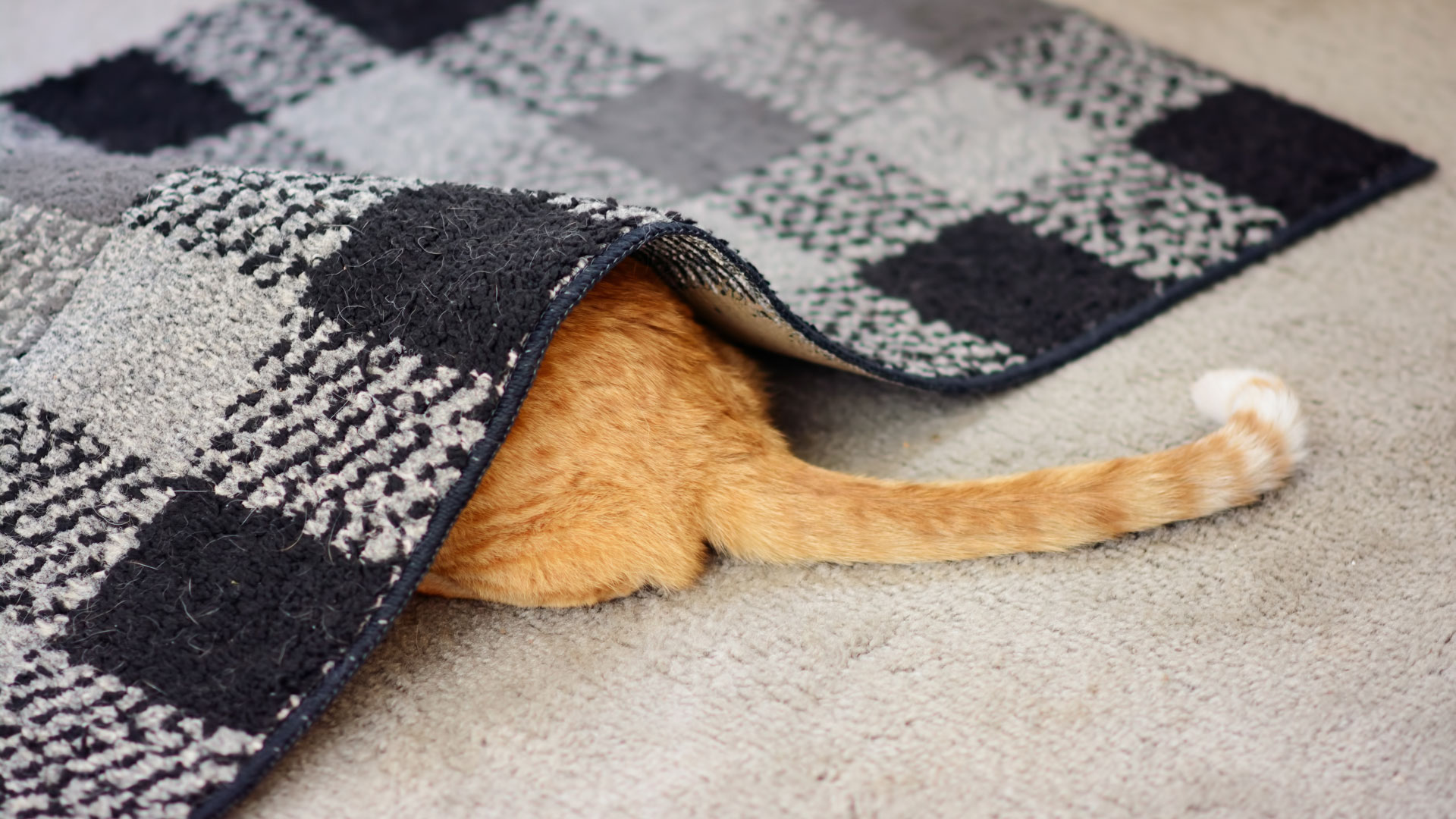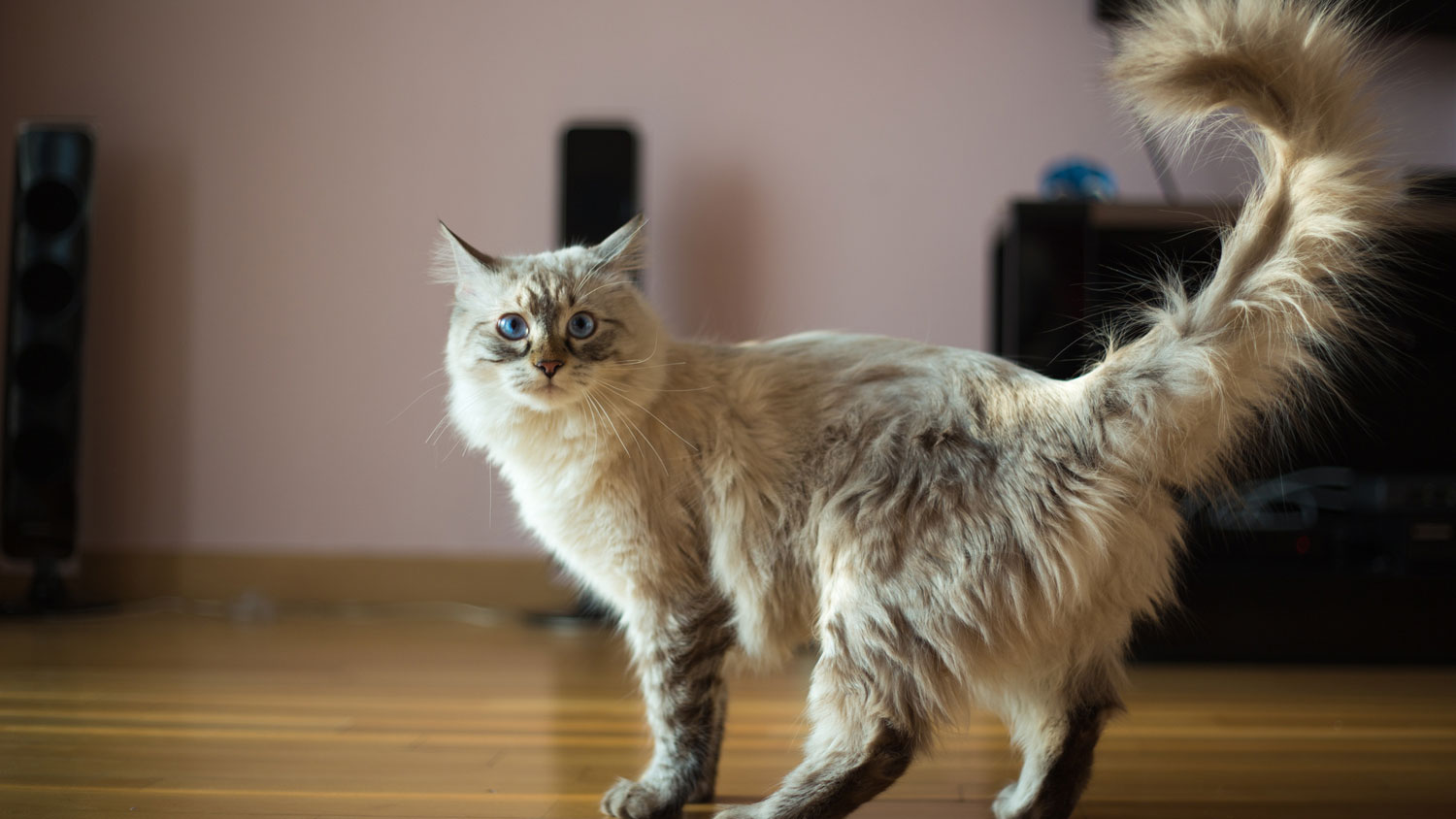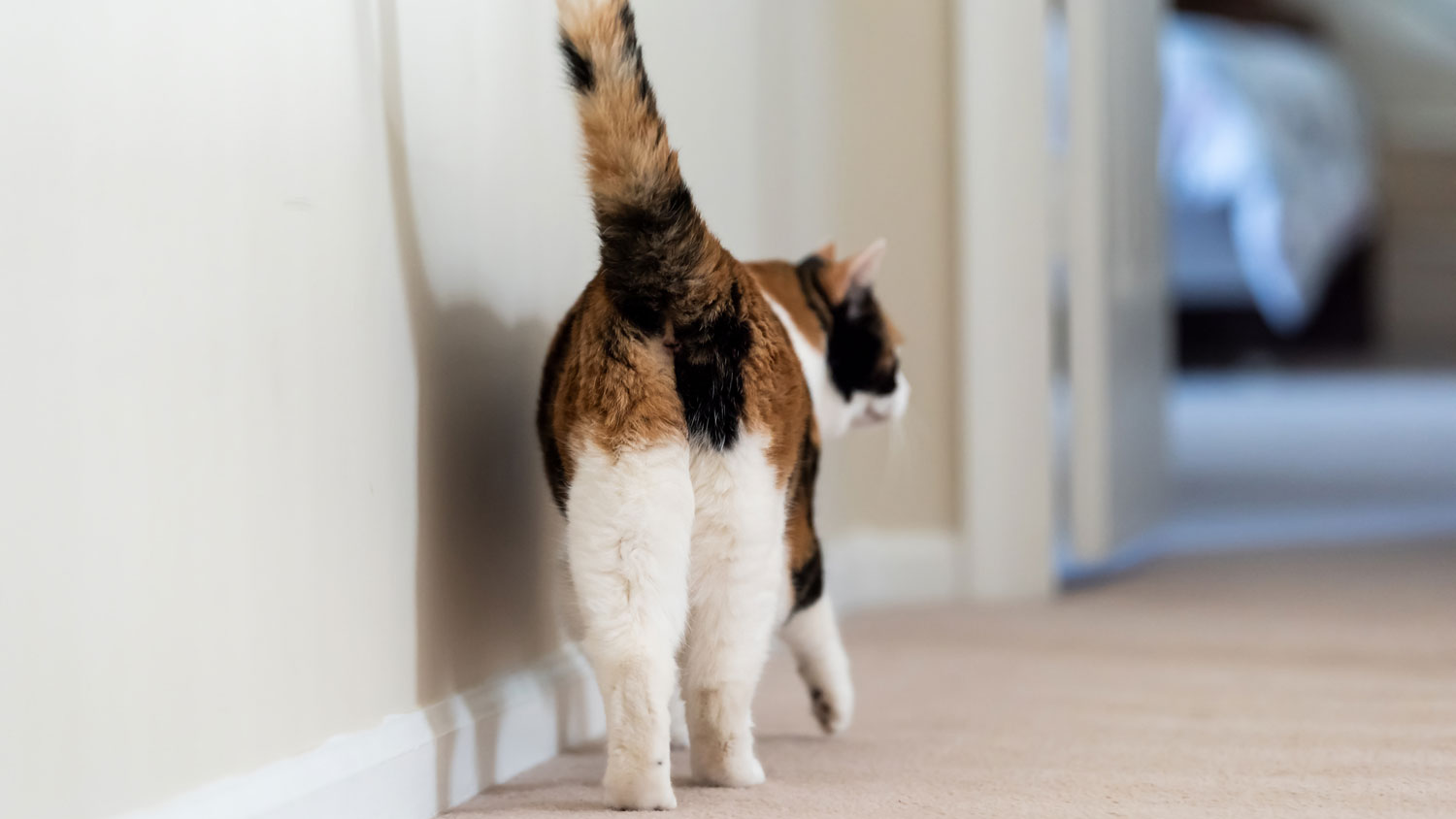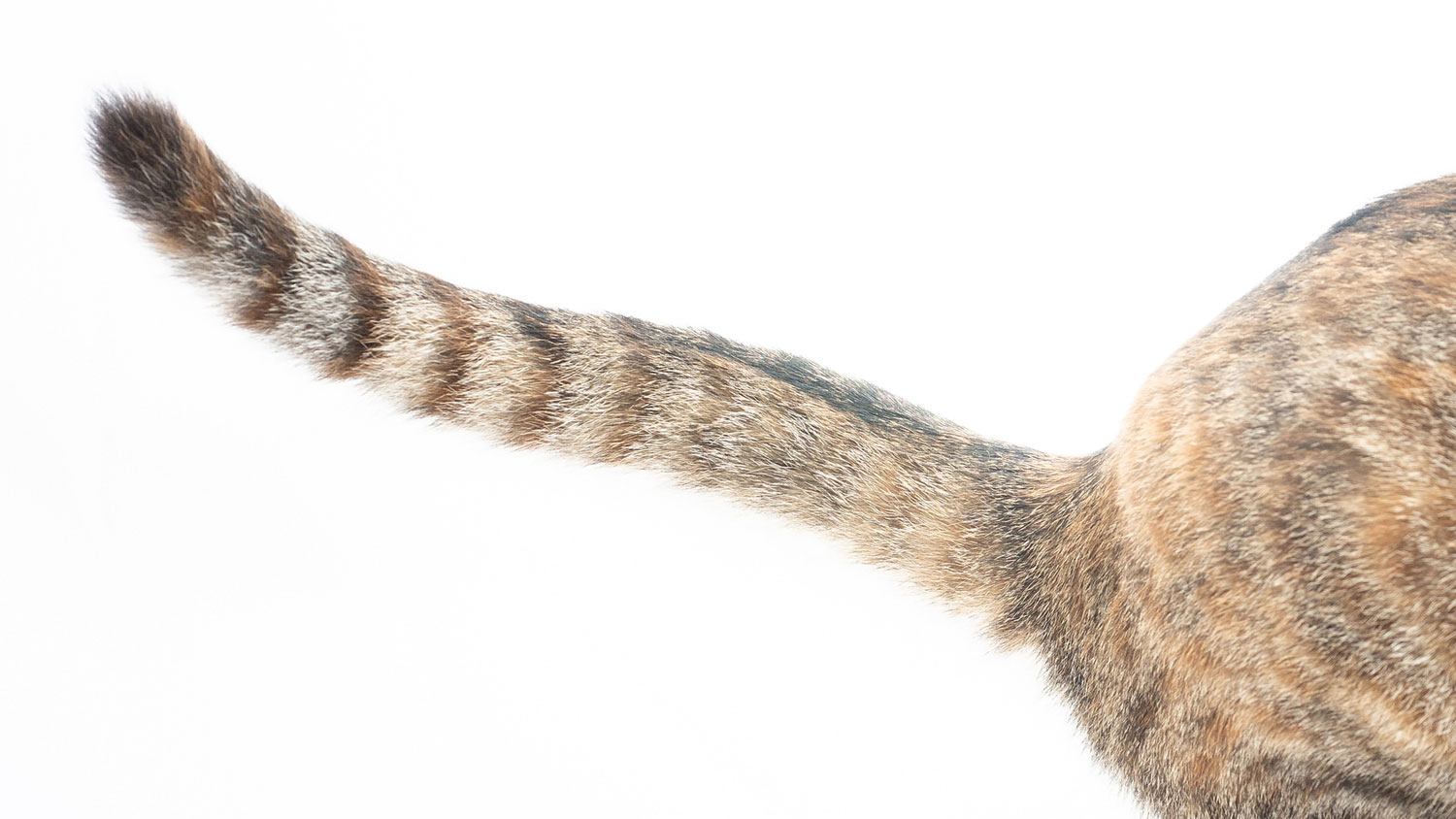What your cat's tail is telling you: Meanings, facts and its importance
A cat's tail is an amazing communication tool, and here's your guide to what it means

A cat's tail can be the most wonderfully expressive appendage that's capable of communicating a whole range of moods and emotions, and if you really want to get to know your kitty you should take the time to learn exactly what the state of its tail means at any given time.
While cats can often be inscrutable little creatures, an understanding of cat body language gives you a much better chance of what it might be trying to say to you, or indeed other cats. And a cat's tail makes up a large part of its unspoken vocabulary, whether it's high in the air, whipping back and forth or tucked firmly between its legs.
Here's where we look into everything you need to know about cats' tails, so if you've ever wonder what a cat's tail is for, why cats wag their tails or whether a cat can survive without a tail, read on for all the answers.
Why do cats have tails?
Well, why not? Most vertebrates, including mammals, reptiles, fish and birds have tails; in fact we humans are one of the few exceptions to the rule. Tails perform all sorts of useful functions across different animal species; birds use them to balance and also to steer and maneuver in flight, while many land mammals use their tails to sweep away flies and other insects.
Some animals are blessed with prehensile tails that they can use to grab hold of tree branches, and lots of animals also use their tails for social signaling, whether it's for courtship, warning of danger or indicating their physical or emotional states.
For cats, the tail has two main uses. From a practical point of view it provides balance, enabling them to stay steady on narrow walkways, and helping them out when running, jumping and pouncing. They're also really useful for keeping warm in colder weather and, as with other animals, cats also use their tails to communicate as well as a signal of their current mood. So let's look into exactly what a cat's tail might be telling you at any given time.

What's your cat telling you with its tail?
To read a cat's mood from its tail, there are three things you need to be looking out for: the position of the tail, its movement, and how puffed up the fur is. So now you know that, let's look at the communicative possibilities:
Get the best advice, tips and top tech for your beloved Pets
Cat's tail: position
- Vertical tail: this is always a good sign. A straight-up tail denotes a cat that's feeling happy, confident and friendly, and if it does it in the presence of another cat it's probably inviting it over for a sniff. Watch out for a little twitch or a slight curl at the top of the tail, too; that's a sign that it's feeling especially happy.
- Question mark tail: if your cat's tail is up in the air but curved like a question mark, that's a sure sign that it's feeling playful and in the mood for a game, so be ready with one of the best cat toys.

- Low tail: a cat with a tail hanging low is in a serious mood; it might be feeling worried, stressed or even aggressive. The best way to figure out which is to keep an eye on its movement and the state of its fur, which we'll come to in a bit.
- Tail tucked away: your cat's not happy if its tail is tucked between its legs. It's probably feeling nervous, frightened or submissive; if it's outside, take a look around to see if there are any other animals around that might be frightening it, but on the whole kitty's probably best left to its own devices to chill out and calm down.
- Tail hanging limp: this isn't a good sign. A limp tail is an indicator that your cat may be feeling unwell; if it's looking a little out of sorts, our guide to 'Is my cat sick?' can help you decide if it might need a trip to the vet.
- Tail wrapped around another cat or your arm: a cat might wrap its tail around another cat or a human's arm (or leg, or whatever), but only when it feels super-comfortable and happy in their company. In short, if your cat does this to you, it really loves you.
Cat's tail: movement
- Tail swaying from side to side: a cat whose tail is swaying back and forth is a cat that's concentrating on something. If it's out hunting it may have spotted a potential victim, while if it's indoors it might be about to pounce on a toy, or it may be watching a bird from a window (and chattering at the same time).
- Tail whipping back and forth: if your cat's tail is more than swaying, and is instead whipping quickly back and forth, you should probably stay away. That's a sign of an annoyed cat; it may be scared, aggressive or both, and you're best off keeping your distance until it settles down a bit.

- Tail flick: a flick of the tail as your cat walks away from you is a wonderfully earthy piece of feline body language. It basically means 'go away'; at least, that's the polite way of translating it.
- Tail vibrating: a vertical, vibrating or quivering tail can be a tricky one to interpret possibly. If it happens when you're giving kitty a good old fuss, it most likely means that it's really happy; however, it can also mean that your cat's building up to spray on something. If you have a problem with unwanted messages sprayed around the house, watching out for this can save you a bit of wiping up.
Cat's tail: fur
- Fur flat: the normal state of affairs. If the fur's flat on your cat's tail then it's operating within normal parameters, and you'll be able to tell more from its movement and position.
- Fur at the base of the tail puffed up: another sign of an exceptionally happy or excited cat, this one's usually seen when your cat's having absolutely the best fuss ever, and it's usually accompanied by kitty sticking its back end right up in the air and purring fit to burst.
- Tail fully puffed up: the classic sign of a scared or threatened cat. A cat with a massive tail is trying to make itself look big, and it's either about to have an unpleasant encounter with another animal, or it's walking away from an unpleasant encounter with another animal.
5 facts about cat tails

1. A cat tail contains vertebrae
Like your cat's spine, its tail contains vertebrae – between 19 and 23 of them – and it accounts for 10 per cent of the bones in your kitty's body. And while your cat's tail is connected to the spine, it's not actually part of it.
2. Cats can break their tails
While a cat's tail appears to be wonderfully flexible, it can get broken or fractured. While tail fractures should heal naturally, you need to bear in mind that a cat's tail also contains a lot of muscles, nerves and blood vessels that can be affected by a break, so if your cat breaks its tail it needs to see a vet.
3. Domestic cats have a tail trick that wild cats can't do
A cat walking around with its tail in the air is a perfectly normal thing to see, however domestic cats are the only felines that can do this. Wild cats and big cats keep their tails low all the time – either horizontally or tucked between their legs – and they can't walk with their tails in the air.
4. Cats can live without tails
We've already mentioned that cats use their tails for balance, but that doesn't mean that if a cat loses its tail (or if it's born without one) it'll start falling off things. Cats can adapt to life without a tail pretty quickly, so should your kitty lose its tail for any reason, it won't be long until it's up to its old tricks.

5. Manx cats mustn't breed with Manx cats
The Manx cat is the classic example of a cat without a tail (and they seem to get on pretty well without them), but there's a weird genetic catch that comes with this: Manx cats mustn't breed with other Manx cats.
The gene that causes a tailless cat is dominant and needs to be paired with a recessive tail gene, which means that a Manx cat has to be bred with a tailed cat.
Cat fetuses with two copies of the tailless gene often spontaneously abort, and if not they'll probably be born with Manx Syndrome, which can also affect other Manx cats. This can cause spina bifida and other serious health problems.
Read next: Signs your cat loves you or why cat plays with their tail.
Jim is a writer, performer and cat-wrangler based in Bath, who last year adopted a pair of sibling rescue cats who turned out to be effectively feral, and has spent a lot of time since then trying to get them accustomed to people (some success) and each other (ongoing project).

